Roman architecture is an architectural style that adopts certain features of ancient Greek architecture and covers most of the structures built in Europe from 508th BC up to the 4th century. This style was used in building archs, domes, temples, and amphitheaters during the era and was developed out of the intention of the ancient Romans to impress others through imposing structures. Here is a list of 25 impressive examples of Roman architecture:
Tomb of Caecilia Metella. Rome, Italy. -25
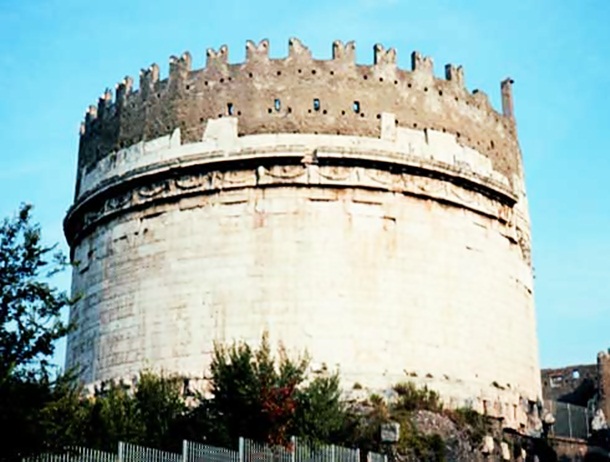 wings.buffalo.edu
wings.buffalo.edu The Tomb of Caecilia Metella is an ancient Roman structure that was constructed at the end of the Roman republican period. It is basically cylindrical in shape and is faced with travertine that has an entablature frieze surrounded with skulls of bulls and garlands.
Thermae of Caracalla. Rome, Italy. 212-216 A.D.
 www.livius.org
www.livius.org Also known as the Baths of Caracalla, the Thermae of Carcalla used to be the second largest public baths in Rome. The baths were originally decorated with impressive sculptures of famous characters like Hercules and are praised even today for their detailed design and construction.
The Roman Forum. Rome, Italy. -100 to 300
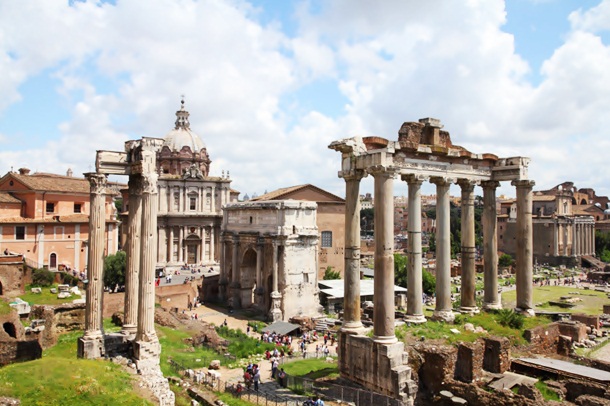 www.rome.net
www.rome.net This ancient site in Rome is an assembly of Roman buildings right at the center of ancient Rome, established during the reign of King Augustus. Its foreground is occupied by monuments of famous people in Italy, mostly built out of cut stone and masonry.
Temple of Venus and Rome. Rome, Italy. 123 to 135 A.D.
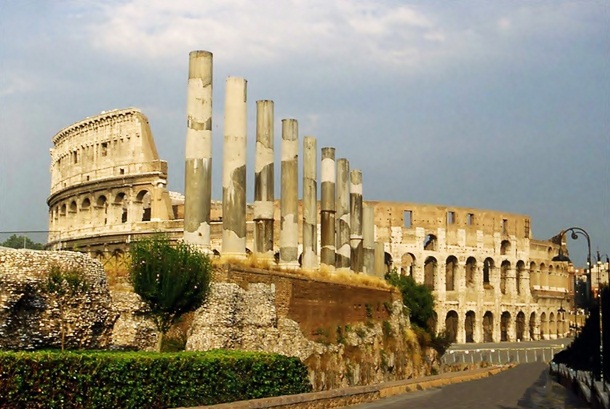 www.greatbuildings.com
www.greatbuildings.com Located in Rome, the Temple of Venus was dedicated to goddess Venus. It was built of solid marble consisting of eight columns that are positioned on top of a podium ascended by lateral staircases. The original structure featured a statue of Venus and numerous works of art.
Temple of Bacchus. Rome, Italy. 92 A.D.
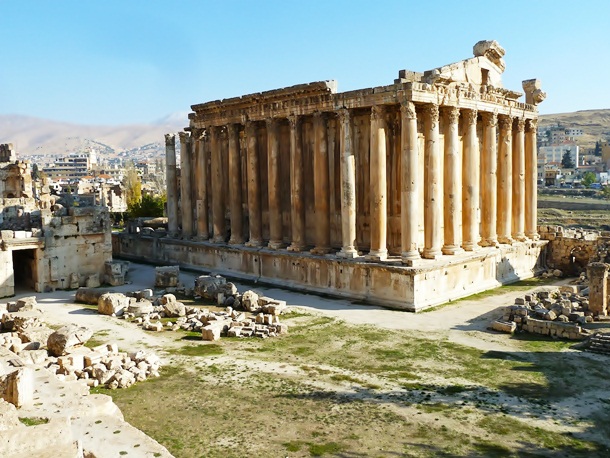 www.48houradventure.com
www.48houradventure.com One of the three main temples in Lebanon, the Temple of Bacchus was built for Dionysus, the Roman god of wine. Considered one of the most impressive Roman temples in the world, this temple is larger than Greece’s Parthenon, with walls adorned by unfluted Corinthian columns.
Stadium of Domitian. Rome, Italy. 92 A.D.
 maitaly.wordpress.com
maitaly.wordpress.com The Stadium of Domitian was commissioned by Emperor Titus as a gift to the Roman people, and was used mostly for athletic contests. It used to become part of the Imperial building program of the Field of Mars and was the first venue for athletic activities in Rome. Made of brick and concrete, this stadium has facades that resemble those of coliseums as well as elongated floor plans.
Roman Colosseum. Rome, Italy. 70 to 82 A.D.
 news.biancolavoro.it
news.biancolavoro.it Roman Colosseum is an amphitheater in Rome, Italy that is made of cut stone. It features Corinthian engaged columns and Corinthian pilasters. It was inaugurated by Titus in 80 A.D. and has historical significance because it was the first amphitheater ever built in Rome.
Porte S. Andre. Autun, France. Circa -75
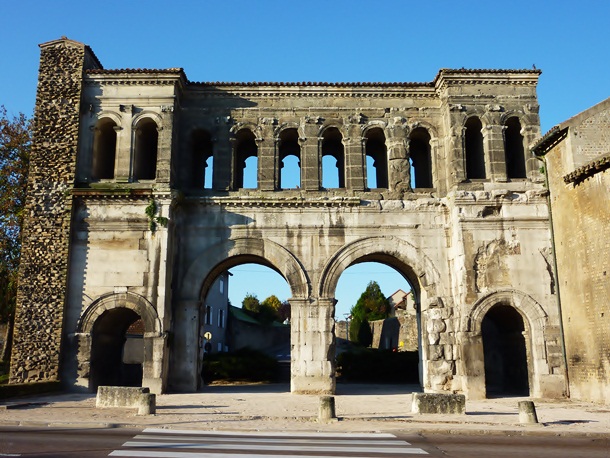 en.wikipedia.org
en.wikipedia.org Located in Autun, France, Porte S. Andre is a fortified gateway that features four archways, two of which for vehicles and the other two for pedestrians. It has arcaded galleries above its openings, as well as connecting ramparts on its sides.
Port Nigra. Trier, Germany. Unknown
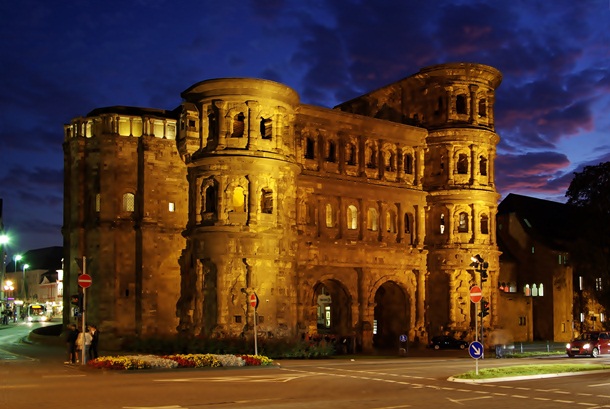 File:Trier Porta Nigra BW 4.JPG - Wikimedia Commons commons.wikimedia.org
File:Trier Porta Nigra BW 4.JPG - Wikimedia Commons commons.wikimedia.org This large Roman city gate situated in Trier, Germany is known today as the largest of its kind in the north of the Alps. Designated to be part of the Roman Monuments in the Trier UNESCO World Heritage Site, this gate is made of dark-colored stone.
Pont du Gard. Nimes, France. -15 to 14.
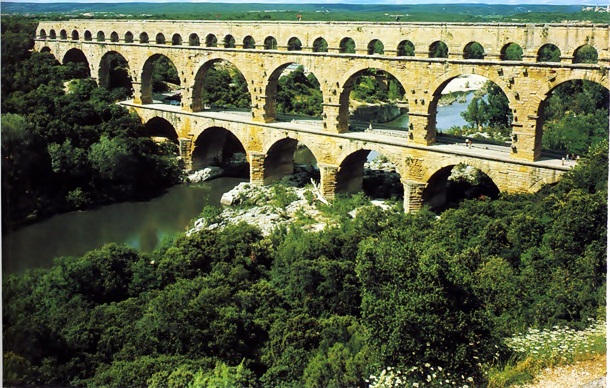 www.sablethome.com
www.sablethome.com Built mostly underground, Pont Du Gard is an ancient Roman aqueduct bridge near Remoulins in southern France. It crosses the gorge of the Gardon and is known as the highest aqueduct bridge during the period. Considered among the best preserved aqueducts in the world, Pont du Gurd was added to UNESCO’s list of World Heritage Sites in 1985.
Pantheon. Rome, Italy. 118 to 126.
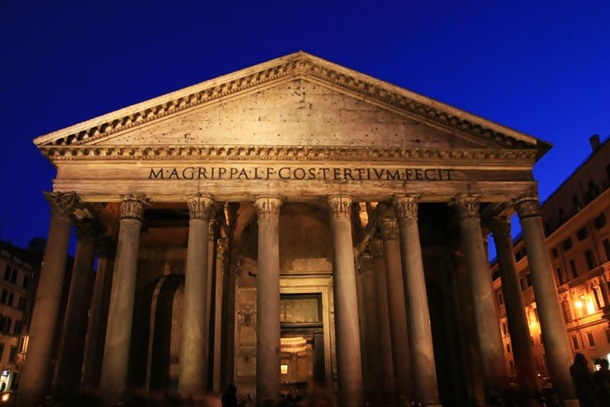 www.rome-roma.net -
www.rome-roma.net - Commissioned by Marcus Agrippa, Pantheon is a building in Rome that was built during the reign of Augustus. It was dedicated to the gods of ancient Rome and features under a pediment a portico of Corinthian columns made of large granite. Today, the dome of Pantheon is still considered as the largest unreinforced concrete dome in the world.
Moissac Abbey. Tarn-et Garonne, France. Circa 650 to 850
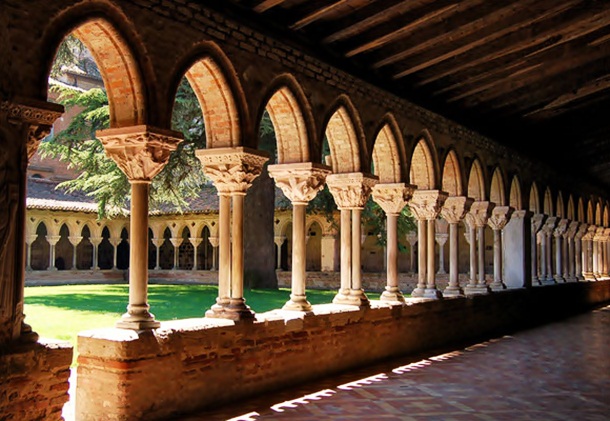 postmuse.blogspot.com
postmuse.blogspot.com A Benedictine and Cluniac monastery in France, Moissac Abbey is a Romanesque monastery that features impressive sculpture around its entrance. Among its notable architectural features are its southwest portico and its crenellated structure. Supporting its tympanum is a trumeau that shows a statue of Prophet Jeremiah, which is also an example of Romanesque sculpture.
Mausoleum of Hadrian. Rome, Italy. 135
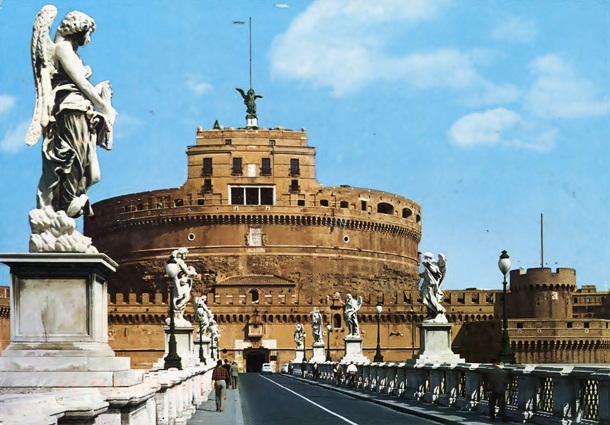 faculty.txwes.edu
faculty.txwes.edu Also known as the Castel Sant’Angelo, the Mausoleum of Hadrian is a cylindrical building in Italy that was first commissioned by Emperor Hadrian as a mausoleum for his family. Eventually, it was used as a fortress and castle by popes and became the tallest building in Rome.
Mausoleum of Galla Placidia. Ravenna, Italy. 420
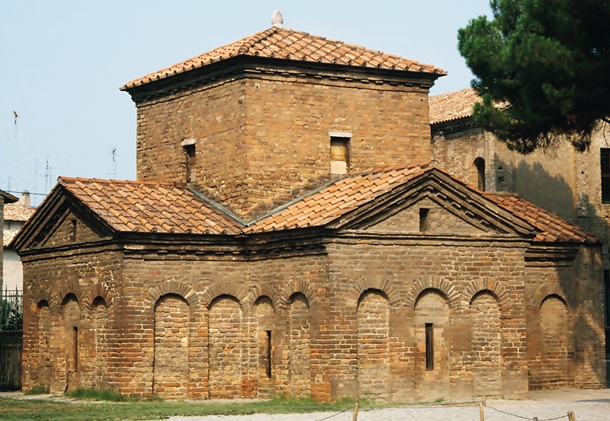 www.worldisround.com
www.worldisround.com This mausoleum is a Roman building that is among the seven structures in Ravenna that are included in the World Heritage List. Experts refer to this structure as one of the best preserved mosaic monuments in Italy. It features artistically perfect mosaics covering the walls of its vault, as well as lunettes and cupola.
Mausoleum of Augustus. Rome, Italy. -25
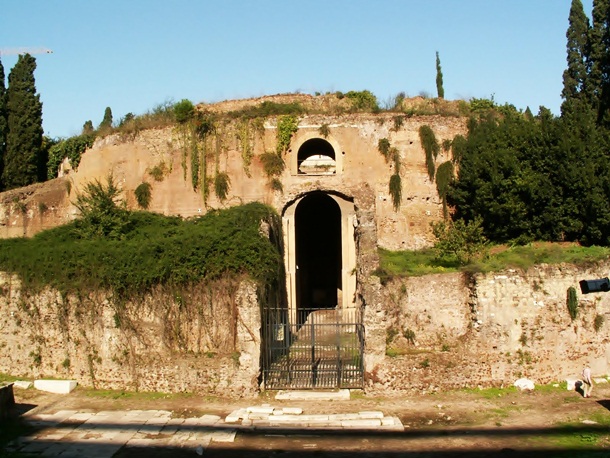 www.worldalldetails.com
www.worldalldetails.com Constructed by Roman Emperor Augustus, the Mausoleum of Augustus features grounds that cover an area as wide as a few city blocks. It constitutes the Museum of the Ara Pacis and the Church of San Carlo and is considered one of the most popular landmarks on the northern side of the Campus Martius.
Maison Carree. Nimes, Provence, France. -16
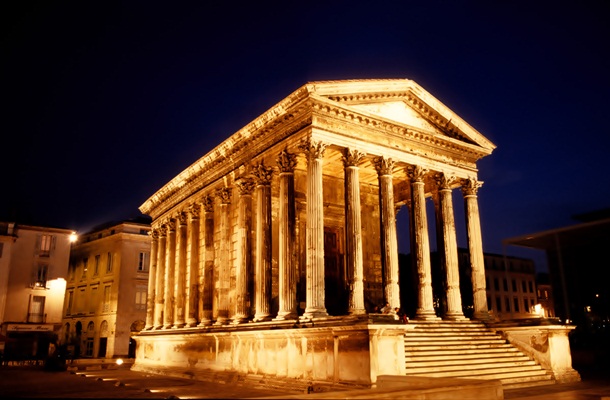 bmau.free.fr
bmau.free.fr This ancient building in Nimes in Southern France is often recognized as one of the best Roman temples in the world. Its façade features a deep portico that is almost a third of the length of the entire building. This building also has a hexastyle design because of its six Corinthian columns.
Library of Ephesus. Ephesus, Turkey. 117 to 120
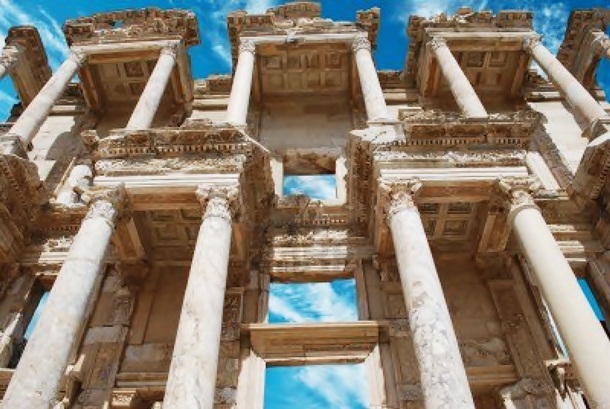 www.123rf.com
www.123rf.com Made of bearing masonry and stone, the Library of Ephesus is an ancient Roman, classical and Corinthian building that is also sometimes referred to as the Library of Celsus. It is a rectangular building with closely spaced columns, separated by a narrow ambulatory. Its façade is notable for its two storeys of columned aedicules.
House of the Faun. Pompeii, Italy. -100
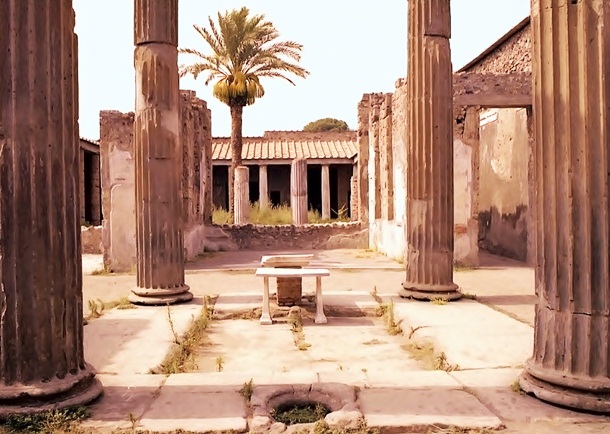 www.panoramio.com
www.panoramio.com Considered as one of the largest and most magnificent private residences ever built in Pompeii, the House of the Faun is a great piece of Roman art characterized by its luxurious aristocratic homes and buildings from the Roman Republic. This building is divided into five parts and features a highly sophisticated building plan.
House of Menander. Pompeii, Italy. -300
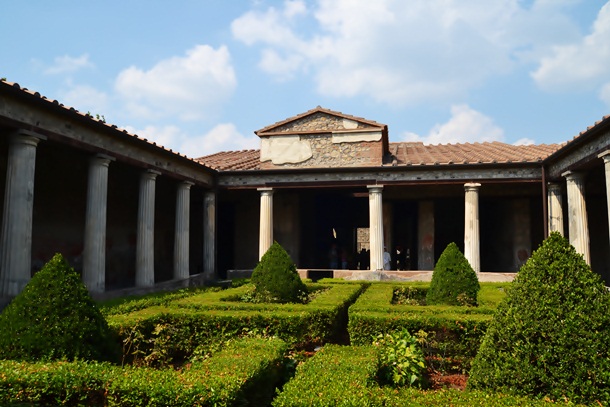 wikimapia.org
wikimapia.org This building in Pompeii, Italy is located northeast of the Little and Large Theaters and the Gladiators’ Barracks. About the size of a whole city block, this building was erected by an unknown architect and features a well-preserved fresco of Menander, a Greek Dramatist.
Domus Aurea. Rome, Italy. 64
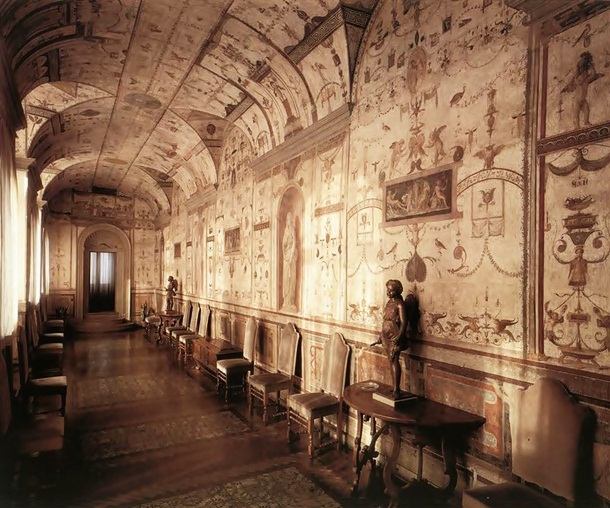 theredlist.fr
theredlist.fr Also called “The Golden House,” Domus Aurea is a portico villa in Rome, Italy that was built by Emperor Nero in 64 A.D. It features stuccoed ceilings made of precious stones and ivory veneers, as well as frescoed walls and was originally built as a place of entertainment.
City of Timgad. Aures Mountains, Algeria. 100
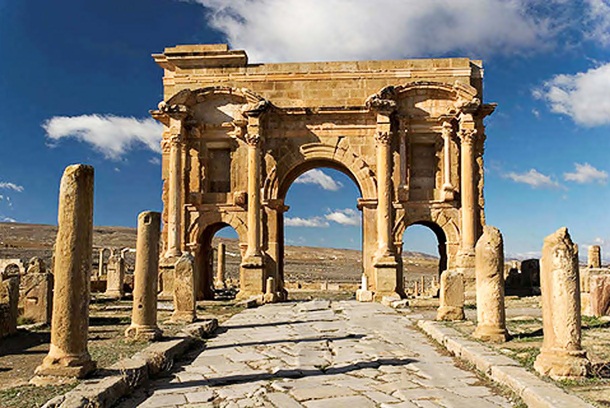 www.historvius.com -
www.historvius.com - Also known as Thamugas, the City of Timgad is a Roman colonial town in the Aures Mountains of Algeria. It is a walled city that is known to represent the typical grid pattern in ancient Roman city planning with its extensive forum occupying its lower center.
Baths at Ostia. Ostia, Italy. Circa 150.
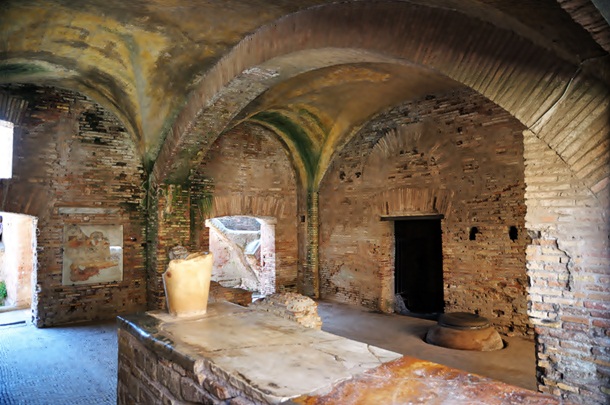 www.rome.net
www.rome.net Located at the archeological site of Ostia Antica, the Baths at Ostia are communal baths made of concrete and stone bearing masonry. These baths were built in Ancient Roman Corinthian Style and feature a cluster of vaulted spaces. Most of them are notable for their conservative layouts.
Arch of Titus. Via Sacra, Rome, Italy. 81 A.D.
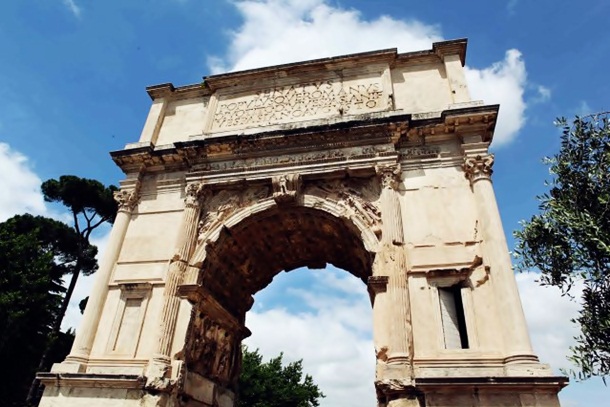 locationreports.wordpress.com
locationreports.wordpress.com A 1st century arch, the Arch of Titus is located at the southeast side of the Roman Forum and was constructed by Emperor Domitian following the death of his brother Titus. This has provided a general model for many of Rome’s triumphal arches since the 16th century. It features a large arch as well as fluted and “unfluted” columns.
Arch of Severus. Rome, Italy. 205 A.D.
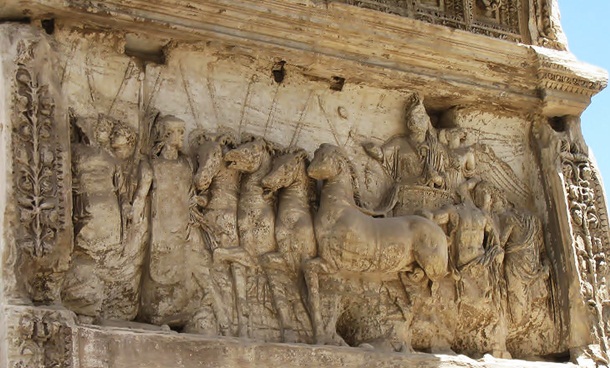 romeartlover.tripod.com
romeartlover.tripod.com The Arch of Severus is a white marble arch that was erected to commemorate the victories of Emperor Septimius Severus, Carcalla and Geta. It has lateral openings and features that resemble those of several Early Modern triumphal arches at the time.
Arch of Constantine. Rome, Italy. 315 A.D.
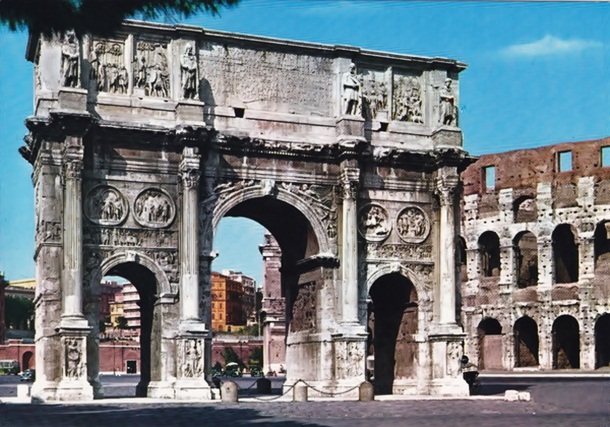 opentravel.com
opentravel.com This triumphal arch in Rome was built to commemorate the victory of Constantine in the Battle of Milvian Bridge on October 28, 312 A.D. It is a classic monument that is rooted in the tradition of Hellenistic art, featuring detached columns and an attic patterned after the Arch of Septimius Severus.



























